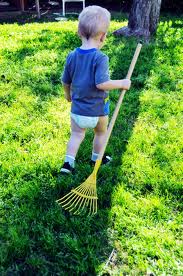
There’s nothing like starting a garden of fresh veggies and flowers
Before you go any further, I have to warn you. Gardening is addictive. One day you decide to start a garden in that little unused part of your back yard, and before you know it, you have a vegetable garden and an herb garden and a flower garden and…
But if you’re willing to treat yourself and your family to tasty, healthy vegetables, enjoy your time outdoors and decorate your home with just-cut flowers, the addiction might just be worth it! Still reading? Okay. You have been warned. Now for the 101 on how to choose where to put your garden, how to find the right plants for your climate and other basics that make starting a garden easier.
Where does the garden go?
The placement of your garden will provide the foundation for everything that comes after. Why? Because if you select a plot in the all-day sun, you’ll need to select plants that thrive in full sun. Shady gardens need shade-loving plants.
Location also determines soil quality (although you can amend soil to make it better.) Access to water and safety from running dogs and kids are also location-based factors.
~
If at all possible, you want a garden bed that offers good soil with good drainage. A mixture of shady and sunny areas will allow you to plant the different kinds of seeds. Try to pick a spot that’s not between two heavy-traffic areas, like house and swing set or pool and gate.
What does your garden grow?
Once you have your plot selected, it’s time for the really fun part. You get to pick your seeds, from herbs and veggies to flowers and grown-covers.
For the tastiest, healthiest crops, do try to select heirloom seeds or plants grown from heirloom seeds (non-GMO, non-hybrid) .
Hybrids or GMo crops are popular with commercial food growers because the plants have been genetically modified to withstand long transport and days or even weeks on grocery store shelves. Unfortunately, those pluses typically come with sacrifices in flavor, texture and nutrition.
Since your garden produce won’t be shipped or kept on a shelf, you have the luxury of using healthier, more nutritious heirloom, open-pollination seeds.
As for the specifics, there are several factors that control what you should plant, including,
- What your family likes to eat
- How much space you have
- If your garden is in the shade, sun or both
- Your gardening climate zone
- The space you have to store your harvest
- The time of year you’re starting your garden
- The amount of time you have to work in your garden
- The quality of your soil
Spend some time reading about what grows well in your area. Talk to local nursery owners, and find out what works best with your garden space. If this is your first garden, start with easier-to-grow plants to build your experience and confidence.
How much does your garden grow?
One of the most common mistakes beginning gardeners make when starting a garden is planting way too much of each crop. Trust me, NO ONE needs 20 bushels of zucchini or 72 butternut squash for the family table! But that’s exactly what kinds of harvests many beginning gardeners have.
Yes, the seed packet comes with dozens or maybe even hundreds of seeds in each packet. But that does NOT mean you need to grow all of them as plants. Unless you’re big into home canning and preserving, do some reasearch on square foot gardening before you plant. You’ll have more variety and far less waste in a smaller, easier to weed and manage space.
Which is which when your garden grows?
Before you start weeding the seedlings in your garden, make sure you know which are your plants and which are weeds. Many a new garden has tended their space for weeks only to realize they’ve pulled out their plantings and left the weeds.
Who makes a garden grow?
Even if you’ve never planted a single seed, and your houseplants would run away from home if they could, you can still be a successful gardener.
Start small, ask a lot of questions, plant healthy seeds and then make the time to tend your space. I promise you once you taste that first sun-warmed tomato or crisp, sweet green bean, you’ll be hooked for life. But remember, you have been warned!
